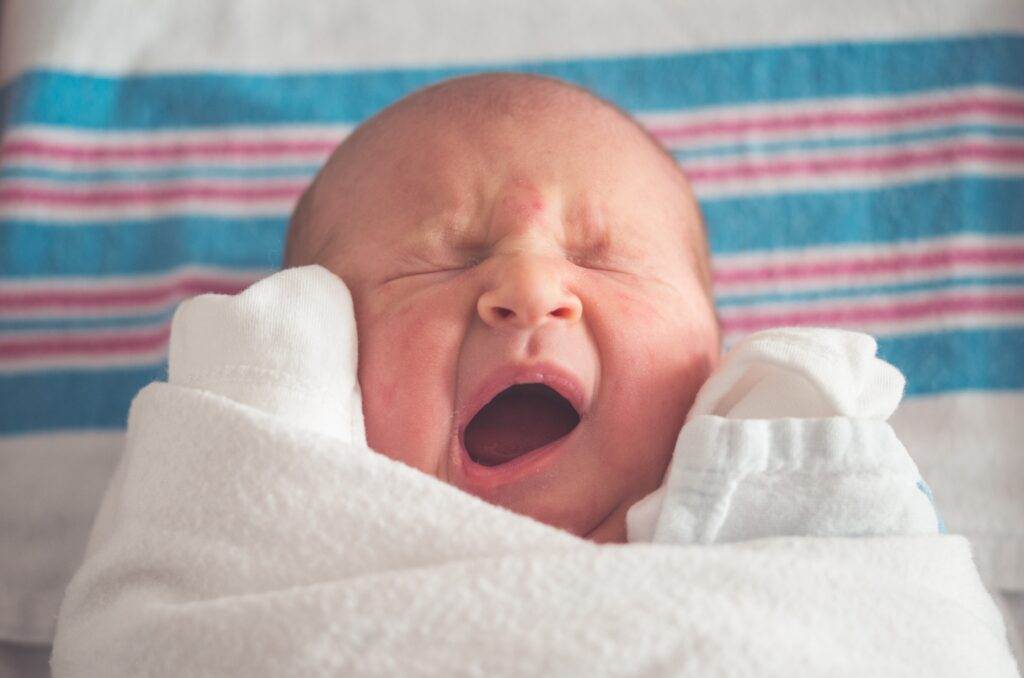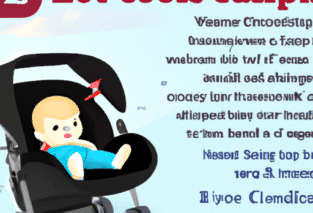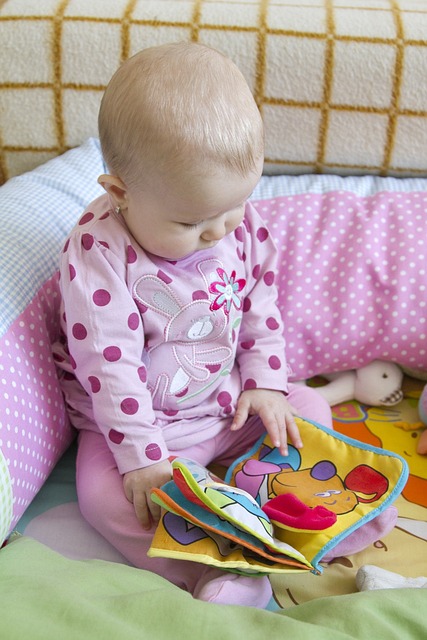Imagine the convenience of taking a leisurely stroll with your little one, without the hassle of lugging around a heavy car seat. That’s where the “When Can A Baby Sit In A Stroller Without A Car Seat?” product comes in. This informative article will provide you with all the essential information you need to know about when it’s safe for your baby to sit in a stroller without a car seat. From the recommended age to the necessary precautions, we’ve got you covered, so you can enjoy those walks together worry-free.

Overview
In the exciting journey of parenthood, there are countless milestones that you and your little one will experience together. From the moment they enter the world as newborns to the curious toddler stage, every developmental phase is filled with wonder and excitement. One question that often arises during this journey is when can a baby sit in a stroller without a car seat? The answer to this question depends on several factors, including your baby’s age, physical readiness, and safety considerations. In this comprehensive article, we will explore each of these factors in detail, providing you with valuable information and helpful tips to guide you through this exciting transition.
Age and Development Milestones
1.1 Newborn Stage
During the newborn stage, which typically lasts from birth until around two months of age, your little one is still developing their head and neck control. Due to their fragility and delicate physiology, it is recommended to use a car seat to provide optimal support and safety during this stage. While you may be eager to embark on stroller outings, it is best to wait until your baby reaches the appropriate milestone.
1.2 Infant Stage
As your baby transitions into the infant stage, usually around three to six months of age, they will begin to gain more head control and overall strength. This is an ideal time to start considering integrating a stroller into your outings. However, it is crucial to assess your baby’s development individually, as every child grows at their own pace.
1.3 Toddler Stage
Once your little one reaches the toddler stage, typically starting around 12 to 18 months, they will have developed significantly more strength, coordination, and balance. At this point, they may be ready to sit in a stroller without a car seat. However, keep in mind that even toddlers may tire easily and may still require occasional rest in a car seat during longer outings.
Physical Readiness
2.1 Head Control
One of the primary physical milestones that indicate your baby’s readiness to sit in a stroller without a car seat is the development of adequate head control. Before transitioning to a stroller, it is crucial that your baby can hold their head up steadily and independently for extended periods. This ability ensures that their head and neck are well-supported during stroller rides, promoting safety and comfort.
2.2 Sitting and Balance
In addition to head control, your baby should also demonstrate the ability to sit with minimal support and maintain proper balance. Gradually introducing short periods of independent sitting is an excellent way to gauge your baby’s readiness for the stroller. Build up their sitting strength gradually, allowing them to develop the necessary core muscles required for a comfortable and safe stroller experience.
2.3 Core Strength
Another essential aspect of physical readiness is the development of core strength. Your baby’s core muscles play a vital role in maintaining proper posture and stability during stroller rides. Engaging in activities that encourage core muscle development, such as tummy time and gentle exercises, can help strengthen these muscles and enhance your baby’s overall physical readiness for the stroller.
Safety Considerations
3.1 Safety Harness
When transitioning your baby to a stroller without a car seat, ensuring their safety remains a top priority. A stroller equipped with a reliable and secure safety harness is essential for keeping your little one safe and secure during outings. Opt for a five-point harness system that includes straps securing their shoulders, waist, and between the legs, reducing the risk of your baby slumping or falling out.
3.2 Reclining Positions
Another safety consideration when using a stroller without a car seat is the availability of multiple reclining positions. Reclining capabilities allow you to adjust the stroller’s seat to a suitable position for your baby’s age, ensuring optimal comfort and posture. For younger babies who may not have developed strong neck muscles, a fully reclined position is recommended to support their head and neck adequately.
3.3 Sturdy Construction
Choose a stroller that is built with sturdy construction and reliable materials. A well-constructed stroller ensures stability and durability, reducing the risk of accidents or malfunctions. Prioritize models that meet the safety standards set by recognized organizations, offering you peace of mind knowing that your baby is in a secure and dependable stroller.

Stroller Features
4.1 Suitable Size and Weight
When selecting a stroller for your baby, it is crucial to consider its size and weight. Ensure that the stroller is appropriate for your baby’s age, weight, and height, allowing them to sit comfortably and securely. Avoid purchasing a stroller that your baby will quickly outgrow, as it may compromise their safety and comfort.
4.2 Adjustable Seats
An important feature to look for in a stroller is an adjustable seat. As your baby grows, their needs and preferences will change. Investing in a stroller with a seat that can be reclined or adjusted in various positions will allow you to cater to their individual needs, ensuring that they remain comfortable throughout the journey.
4.3 Cushioning and Support
Your baby’s comfort is paramount during stroller rides. Look for a stroller that offers adequate cushioning and support, providing a cozy and relaxing environment for your little one. Cushioned seating and padded straps contribute to a pleasurable stroller experience, minimizing discomfort and encouraging longer outings.
Advice from Pediatricians
5.1 Consulting a Pediatrician
While this article provides general guidelines, it is crucial to consult your pediatrician before transitioning your baby to a stroller without a car seat. Pediatricians have in-depth knowledge of your baby’s health and development, allowing them to provide personalized advice based on your baby’s unique needs.
5.2 Individual Variations and Exceptions
Every baby develops at their own pace, and there may be variations or exceptions to the guidelines provided. Monitor your baby’s progress closely and trust your instincts as a parent. If you feel that your baby needs more time or additional support before sitting in a stroller without a car seat, follow your intuition and consult your pediatrician for further guidance.
Tips for Transitioning
6.1 Gradual Process
Transitioning your baby from a car seat to a stroller without a car seat is best approached gradually. Start by incorporating short stroller rides into your routine, gradually increasing the duration as your baby grows more comfortable and accustomed to the new experience. This gradual process allows your baby to adapt, ensuring a smooth and enjoyable transition.
6.2 Observe and Respond
During the transition period, pay close attention to your baby’s cues and responses. Observe their body language, comfort level, and overall mood during stroller rides. By being attuned to their needs, you can address any discomfort or anxiety promptly, ensuring a positive and stress-free experience for both you and your baby.
6.3 Choose Safe Environments
When initially using a stroller without a car seat, select safe and familiar environments for outings. Opt for parks, quiet residential areas, or stroller-friendly trails. By choosing environments that are free from potential hazards or distractions, you can focus on your baby’s comfort and safety, fostering a positive association with stroller rides.
Alternatives to Using a Car Seat
7.1 Baby Carrier
If you are hesitant to transition your baby to a stroller without a car seat, a baby carrier can be a fantastic alternative. Baby carriers allow you to keep your baby close, providing them with comfort and security while still facilitating mobility. There are various types of baby carriers available, such as wraps, slings, and structured carriers, allowing you to find the option that suits your needs and preferences.
7.2 Bassinet Attachment
Some strollers offer bassinet attachments, creating a comfortable and safe space for your baby to recline in. This option allows you to retain the convenience and mobility of a stroller while providing your baby with a cozy and secure environment. Bassinet attachments are particularly suitable for younger babies who require more head and neck support.
7.3 Convertible Strollers
Convertible strollers are designed to adapt to your baby’s changing needs as they grow. These strollers offer the versatility of being used with a car seat during the early stages and can then transition to a regular seat once your baby reaches the appropriate milestones. Investing in a convertible stroller ensures that you can use it for an extended period, providing your baby with comfort and safety throughout their developmental journey.

Conclusion
The journey of transitioning your baby to sit in a stroller without a car seat is an exciting milestone for both you and your little one. By considering your baby’s age and developmental milestones, ensuring physical readiness, and prioritizing safety, you can confidently embrace this new chapter. Remember to consult your pediatrician for personalized advice, observe your baby’s cues closely during the transition, and choose strollers with appropriate features. Whether you opt for a stroller, baby carrier, or convertible stroller, the most important thing is to create a safe and comfortable environment for your baby to explore the world by your side.






